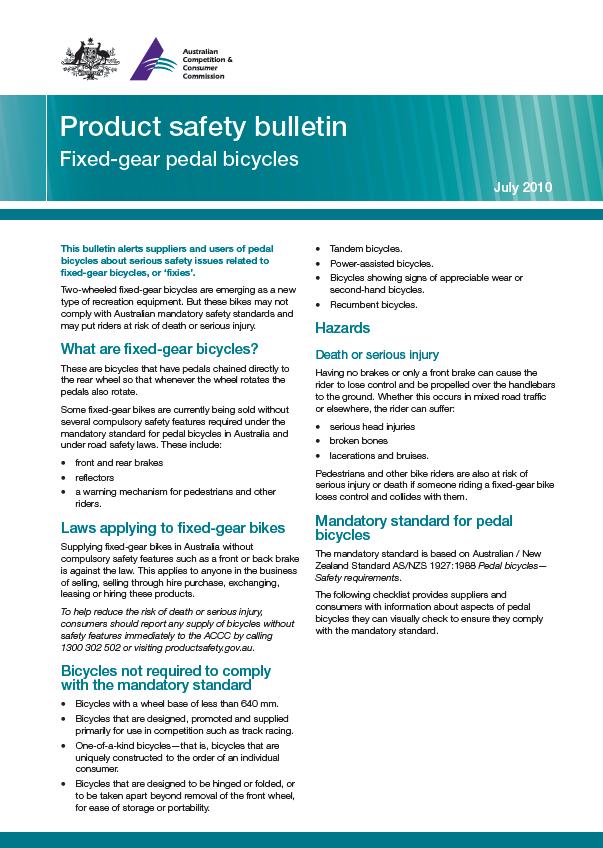Cyclists can suffer serious injuries if the bicycle they are riding is poorly assembled, in bad condition or doesn't meet the mandatory safety standard. Make sure you buy a bicycle with the required safety features.
About bicycles
Bicycles are a popular mode of transport and way to stay active. They can be purchased fully assembled or unassembled and are subject to a mandatory safety standard.
Risks and injuries
Cyclists can suffer:
- broken bones, head injuries or death if the bicycle's braking system, steering or pedal cranks fail
- serious injury or death if the bicycle’s head stem cracks or fails, causing the rider to lose steering control
- lacerations and limb entrapment if the bicycle is not fitted with a chain guard
- serious injury or death if the bike does not have reflectors and is not visible in traffic at night.
Pedestrians may suffer serious injury if a bicycle lacks a warning device, such as a bell, that cyclists can use to signal their presence on bike paths or roads and avoid collisions.
Buying tips
- If buying an assembled bicycle, make sure that it has mandatory safety features such as protective guards, reflectors, brakes and a warning device.
- If buying an unassembled bicycle (e.g. a bike in a box), even if it is partially assembled, you should make sure that it comes with clear and adequate instructions, and all the mandatory safety features.
- Make sure that the bike has at least two braking systems and if it is a children's bike that one of them is a back pedal brake.
- Make sure the bike has an identification number that’s legible and permanently marked.
Safe use
- Take unassembled bikes to a bicycle mechanic to ensure they are assembled according to the manufacturer's instructions and are in safe working order.
- Contact your local traffic authority for information on using bikes safely.


